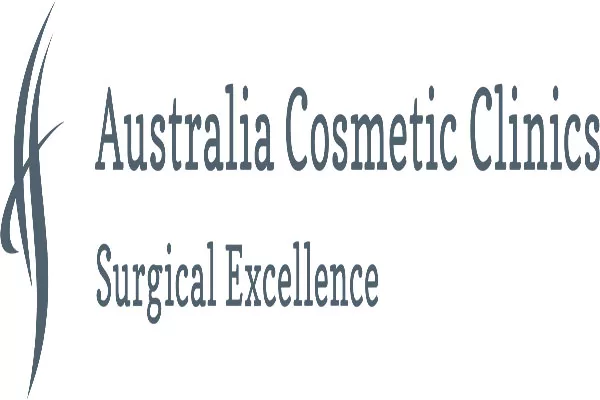Breast implants have been a popular cosmetic surgery procedure for decades. However, there are some instances when women may need to have their implants removed. Perhaps they are experiencing complications or discomfort, or they might simply want to have a more natural look. Whatever the reason, breast implant removal – or explantation – is becoming increasingly common. Silimed explant is one such brand of breast implants that are popularly removed. In this article, we will explore everything you need to know about breast implant removal, with a focus on Silimed explant.
Why Women Choose to Have Breast Implant Removal
There are a variety of reasons why women may choose to have their breast implants removed. Some of the most common reasons include:
- Complications: Breast implants can sometimes lead to complications such as implant rupture, leakage, or capsular contracture (where the scar tissue around the implant becomes hard and painful).
- Discomfort or Pain: Some women may experience discomfort or pain as a result of their breast implants. This could be due to the weight of the implants or the pressure they exert on surrounding tissues.
- Lifestyle Changes: Women may want to remove their implants if their lifestyle has changed (e.g., if they have become more active) and the implants are getting in the way or causing discomfort.
- Change in Aesthetic Preferences: Just as people’s fashion and beauty preferences change over time, so too can their opinions on breast implants. Some women may simply decide that they prefer a more natural look.
- Concerns About Health: There have been a number of concerns raised over the safety of breast implants, particularly in relation to the risk of cancer. Some women may choose to have their implants removed due to these concerns.
What is Silimed?
Silimed is a Brazilian manufacturer of breast implants that has been in operation since 1978. They produce a range of breast implants made from silicon, including both textured and smooth implants. Silimed implants have been popular in many countries around the world, including the United States, and have been used in millions of breast augmentation surgeries.
However, in recent years, there have been concerns raised over the safety of Silimed implants, leading to many women opting to have them removed. These concerns have centered around the potential for contamination of the implants during the manufacturing process. In 2015, Silimed had to recall its products from the market due to allegations of contamination. While Silimed implants are still used in some countries, they have been effectively banned in others.
What is Silimed Explant?
Silimed Explant is the process of having Silimed breast implants removed from the body. This is typically done through a surgical procedure and can be carried out for a variety of reasons.
If you have Silimed breast implants and are considering having them removed, it is important to work with a qualified plastic surgeon who has experience with explantation procedures. They will be able to assess your situation and provide guidance on the best course of action.
It is worth noting that removal of breast implants can leave some women with loose or sagging skin in the breast area. In some cases, a breast lift or other cosmetic procedure may be necessary to achieve the desired aesthetic outcome. Your plastic surgeon will be able to discuss these options with you in more detail.
How is Silimed Explant Surgery Performed?
Silimed explant surgery is performed using a similar technique to that used in breast augmentation surgery. The procedure typically takes around one to two hours and is carried out under general anesthesia.
During the surgery, the plastic surgeon will create incisions in or near the original incision sites from the breast implant surgery. This minimizes scarring and allows the surgeon to remove the implant while leaving as much natural breast tissue intact as possible.
Once the implant has been removed, the surgeon will examine the breast tissue to check for any signs of damage or scarring. If necessary, they may also remove any scar tissue that has formed around the implant (known as capsulectomy).
After the surgery is complete, the incisions will be closed and dressed with surgical tape or sutures. Patients will typically need to wear a surgical bra or compression garment for several weeks following the procedure to aid in the healing process.
Recovery from Silimed Explant Surgery
Recovery from Silimed explant surgery can take several weeks, and patients will need to follow specific guidelines to aid in the healing process. Some common aspects of recovery include:
- Pain Management: Patients may experience some pain and discomfort in the days following the procedure. Your plastic surgeon will prescribe pain medication to manage this discomfort.
- Rest and Relaxation: You will need to take it easy in the days following the procedure. Resting and avoiding physical activity will allow your body to heal.
- Compression Garments: You will likely need to wear a surgical bra or compression garment for several weeks following the procedure.
- Follow-Up Appointments: You will need to schedule follow-up appointments with your plastic surgeon to monitor your healing progress and ensure that there are no complications.
- Returning to Normal Activities: You will need to avoid heavy lifting and strenuous physical activity for several weeks following the procedure. Your plastic surgeon will provide guidance on when it is safe to resume these activities.
As with any surgical procedure, recovery times can vary depending on the individual patient and the specifics of the surgery. It is important to follow your plastic surgeon’s instructions closely and to ask any questions you may have about the recovery process.
Risks and Complications
As with any surgical procedure, there are some risks and potential complications associated with Silimed explant surgery. Some of these include:
- Infection: There is a risk of infection at the surgical site, which can cause pain, swelling, and redness.
- Bleeding: Patients may experience some bleeding during or after the procedure. In rare cases, excessive bleeding may require additional surgery.
- Scarring: While plastic surgeons take steps to minimize scarring, patients may experience some scarring at the incision site.
- Changes in Breast Appearance: Removing breast implants can result in changes to the shape or size of the breasts. In some cases, patients may require additional surgery, such as a breast lift, to achieve the desired aesthetic outcome.
- Anesthesia-Related Risks: As with any surgery, there is a risk of complications related to the use of anesthesia.
It is important to discuss these risks with your plastic surgeon prior to undergoing Silimed explant surgery. They will be able to provide guidance on how to minimize your risk and ensure the best possible outcome.
Costs
The costs associated with Silimed explant surgery can vary depending on a variety of factors, including the patient’s location, the surgeon’s experience, and the specifics of the surgery. Some of the costs to consider include:
- Surgical Fees: This includes the surgeon’s fee, the cost of the anesthesiologist, and the costs associated with the use of the hospital or surgical facility.
- Pre-Op Testing: Prior to the surgery, patients may need to undergo certain tests, such as blood work or imaging studies. These costs will vary depending on the location and the specific tests required.
- Recovery Costs: Patients may need to purchase prescription pain medication, compression garments, and other items to aid in the recovery process.
- Follow-Up Appointments: Patients will need to attend follow-up appointments with their plastic surgeon to monitor their healing progress. These appointments may incur additional costs.
It is important to discuss the costs associated with Silimed explant surgery with your plastic surgeon prior to the procedure. They will be able to provide you with an estimate of the costs involved and may be able to work with you to come up with a payment plan if needed.
Choosing a Plastic Surgeon
Choosing the right plastic surgeon for Silimed explant surgery is crucial. You want to work with someone who is experienced, trustworthy, and has a proven track record of success. Here are some tips for choosing a plastic surgeon for Silimed explant surgery:
- Do Your Research: Take the time to research potential surgeons online. Look for reviews and recommendations from others who have undergone similar procedures.
- Check Credentials: Ensure that the plastic surgeon is board-certified and has the necessary licenses and certifications to perform the procedure.
- Schedule Consultations: Prior to undergoing the procedure, schedule consultations with several plastic surgeons. This will allow you to ask questions and get a sense of their experience and expertise.
- Ask Questions: Don’t be afraid to ask questions during the consultation. You want to ensure that you fully understand the procedure and what to expect.
- Assess Comfort Level: It’s important to feel comfortable and at ease with your plastic surgeon. Choose someone who you feel you can trust and who listens to your concerns.
- Review Before and After Photos: Ask to see before and after photos of previous Silimed explant patients. This will give you an idea of the surgeon’s experience and the results that can be achieved.
By taking the time to choose the right plastic surgeon, you can ensure that your Silimed explant surgery is a success.
Conclusion
Silimed explant surgery is a common procedure for women who wish to have their Silimed breast implants removed. The surgery is typically performed to address complications, discomfort, lifestyle changes, or aesthetic preferences. It is important to work with a qualified plastic surgeon who has experience with explantation procedures to ensure the best possible outcome.
While Silimed breast implants have been popular for many years, concerns over their safety and potential contamination have led to many women opting for explantation. It is important to discuss these concerns with your plastic surgeon and consider alternative implant options if necessary.
As with any surgical procedure, there are risks and potential complications associated with Silimed explant surgery. Patients should carefully consider the costs involved and take steps to choose the right plastic surgeon for the procedure.
If you are considering Silimed explant surgery, take the time to research your options, ask questions, and work with a qualified plastic surgeon to achieve the best possible outcome.







